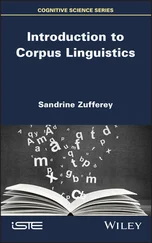It has often been claimed that passive subjects ‘originate’ as the complements of their verbs. Alternations such as those in (364) below suggest that this is a plausible assumption:
(364) a.
The names of the directors are listed below
b.
Below are listed the names of the directors
In (364a), the italicised passive subject occupies the typical pre-auxiliary subject position, preceding are. But in the curious construction in (364b), the italicised expression is positioned after the verb listed, suggesting that it does indeed originate as the complement of this verb.
But if the subject of a passive clause originates as the complement of the relevant passive participle, how does it get from complement position into subject position? In the framework we are developing here, it is proposed that passive subjects are moved from complement position within VP into subject/specifier position within TP. Given this proposal, the passive that-clause in (363b) will be derived as in (365) below: (365)
CP
C
TP
that
DP
T'
the jewels
T
VP
were
V
DP
stolen
the jewels
306
senten ces
The analysis in (365) claims that the DP the jewels originates as the complement of the verb stolen and is then moved into spec-TP (i.e. the specifier position within TP) to become the subject (and specifier) of the passive auxiliary were. The type of movement operation indicated in (365) is traditionally referred to as passivisation: however, because the passivised DP moves from complement position
to subject position (hence from one argument position to another; see section 18
for the notion of argument), this type of movement operation, which moves a
constituent into the specifier position within TP where it becomes the subject of the relevant clause, is referred to more generally as A-movement (an abbreviation for argument movement). By extension of this terminology, movement operations like operator movement and topicalisation which move a constituent to
the specifier in CP are said to involve A-bar movement – i.e. movement of a
constituent to a non-argument position (more specifically, a non-subject specifier position at the beginning of the clause (the term A-bar position here meaning
‘non-A position’).
In this section, we have looked at a number of different types of movement
operation. The first of these was a head movement operation which moves the
head word of one phrase into a position where it becomes the head word of a
higher phrase (as in auxiliary inversion moving an auxiliary from the head T
position of TP into the head C position of CP). A second was operator movement, which moves a (negative or interrogative) operator expression into the specifier position within CP (in some cases requiring concomitant auxiliary inversion). A third was topicalisation, which moves an expression which is the topic of
a sentence into the specifier position within CP (though without concomitant auxiliary inversion). The fourth operation we looked at was passivisation, which moves the complement of a passive participle into the specifier position within TP. Note that all the movement operations we have looked at involve movement to the edge (i.e. head or specifier position) of a functional projection: for example, auxiliary inversion involves movement to the head C position of CP; operator movement and topicalisation involve movement to the specifier position within CP; and passivisation involves movement to the specifier position within TP.
Our discussion of movement operations has interesting implications for the
overall organisation of a grammar. It means that the derivation of a structure (i.e. the way in which a given structure is formed) involves not only a series of merger operations combining pairs of categories together to form larger
and larger phrases and clauses and agreement operations responsible for
determining the form of particular constituents, but also, possibly, one or
more movement operations, moving words or phrases from one position in
a structure to another. We shall say a little more about the general structure of a grammar from the perspective we are adopting in section 23 (exercises 1
and 2).
Movement
307
Exercises
1.
Discuss the syntax of the following sentences, drawing a separate tree
diagram to represent the structure of each of them (using arrows to
show what has moved from where to where):
(a) i. Nobody will say anything
ii. Nothing will anybody say
(b) i. What can anyone do?
ii. Can anyone do anything?
(c) i. Who will he say was talking about what?
ii. *What will he say who was talking about?
(d) i. What you doing? (colloquial English)
ii. You doing anything? (colloquial English)
(e) i. No students were arrested
ii. Were any students arrested?
(f) i. Nobody thinks anyone will support the neofascists
ii. The neofascists, nobody thinks anyone will support
Hints -----------------------------------------------------------------------------------------------------------------------------------------------------------
Remember the core assumptions in section 20, namely that (i) clauses are CP+TP+VP structures containing an overt or covert C constituent
and an overt or covert T constituent, and (ii) that noun expressions are
DPs (containing an overt or covert D constituent) and pronouns are
Ds. Remember, too, the core assumptions of this section, namely (i)
that auxiliary inversion moves an auxiliary from T to C, (ii) that yes–
no questions contain a null question operator ? in spec-CP, (iii) that
operator movement and topicalisation move an affected constituent
into the specifier position within CP, (iv) that passivisation moves an
affected constituent into the specifier position within TP, and (v) that
polarity items like any/anyone/anything/anybody must follow a nega-
tive or interrogative operator. In addition, in relation to the sentences
in (d), consider the possibility that an inverted auxiliary in C can have
a null spellout (pronunciation) in rapid colloquial speech styles if it is a weak form which can be reduced to the vowel schwa /ə/.
Model answer for (1a) -----------------------------------------------------------------------------------------------------------
Sentence (i) in (1a) is derived as follows. The verb say merges with the D-pronoun anything to form the VP say anything. This VP is in turn
merged with the T-auxiliary will to form the T0 will say anything. The
resulting T0 is then merged with the D-pronoun nobody to form the TP
nobody will say anything. This TP is subsequently merged with a null
complementiser, so that the sentence has the following structure:
308
senten ces
(i)
CP
C
TP
ϕ
D
T'
Nobody
T
VP
will
V
D
say
anything
The null complementiser serves to mark the sentence as declarative in
force. The polarity item anything is licensed by (i.e. allowed to occur
in the structure by virtue of the presence of) the preceding negative
pronoun nobody.
Sentence (ii) in (1a) has the following derivation. The verb say merges with the D-pronoun nothing to form the VP say nothing. This
VP is in turn merged with the T-auxiliary will to form the T0 will say
nothing. The resulting T0 is then merged with the D-pronoun any-
body to form the TP anybody will say nothing. This TP is subse-
quently merged with a C constituent which attracts a copy of
the auxiliary will to move from T to C (with the original copy of
Читать дальше
![Andrew Radford Linguistics An Introduction [Second Edition] обложка книги](/books/397851/andrew-radford-linguistics-an-introduction-second-cover.webp)











